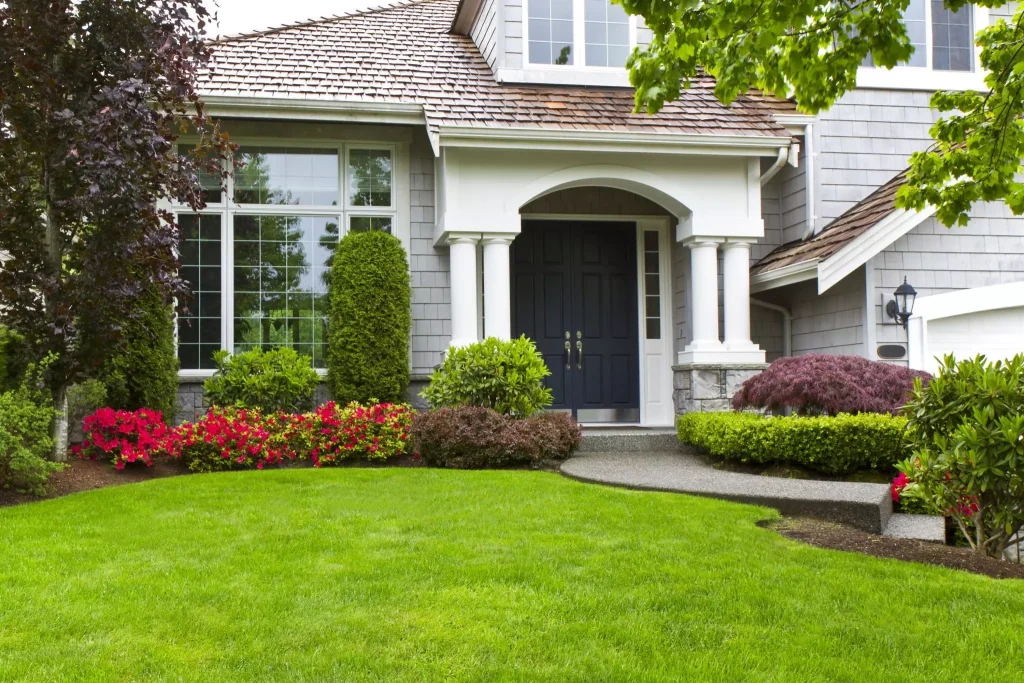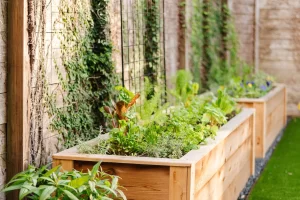Renovating a landscape can be a complex undertaking, so breaking it down into smaller projects makes the task more manageable.
Begin by drawing a landscape map on graph paper. Be sure to include any buildings, waterways, walkways, patios, fences or gazebos on your plan.
Add some sculptured elements such as these orbs from Made By Barb. Or use this tutorial from Central Texas Gardener to build your own concrete orbs!
1. Plants
Learn how to keep plants thriving with these gardening tips and tricks.
Beginner gardeners may feel overwhelmed by all of the choices available to them, so the key is to start by selecting colors and textures you would like included in their landscape design.
Once you’ve selected your color palette, select plants that complement it while also meeting your tastes and needs. Be sure to incorporate edible varieties like vegetables and herbs for an eco-friendly garden design.
Size your garden beds and paths carefully, too wide beds being difficult to manage. Vegetable beds should not exceed 4 feet wide while flower beds should be no more than 2 or 3 feet wide for easier maintenance. Designate walkways between beds for easier upkeep.
2. Hardscaping
Addition of hardscape (inanimate non-living material) can improve the functionality and beauty of any landscape while increasing its resale value and therefore, increasing property resale values.
Hardscape elements may include pathways, benches, fences, walls, gazebos and pergolas – you can incorporate any of these into DIY landscaping projects with ease!
As part of your landscape design process, Lipanovich advises creating a rough sketch of your space. “These don’t need to be master plans,” she notes, but can simply serve as reminders as you create landscaping plans.
Be careful when adding hardscape elements to your yard. Each new element can have an effect on the micro ecosystem nearby; take great care in selecting any new elements that might impact on that ecosystem. Also consider doing any hardscaping projects during spring and summer when raindrops are less likely.
3. Lighting
Landscape lighting is all about emphasizing features that make your yard truly special at night, such as beautiful stone walls or stately trees, as well as strategically placed lights to showcase water features or deck stairs.
Use both cool and warm lighting to set the atmosphere. Incorporate yellow- or orange-toned bulbs in your recessed lights and walkway lighting; accent with cool blue- or white-toned bulbs in spotlights, floodlights or well lights for an atmosphere-setting experience.
Lipanovich notes that one of the key aspects of this principle is ensuring your landscape looks appealing from all of its viewing angles, whether using pencil and grid paper or computer programs. When planning this space it’s also essential to think about when people will view it at various times during the day and night.
4. Water
Revamping your landscape can be a major undertaking, and before embarking on this endeavor it’s crucial that you create a detailed map of what you envision for the project. Even a rudimentary sketch can help keep your vision clear while making completion simpler.
Add water features to your garden or yard and witness them transform it instantly! A waterfall, pond or stream are excellent additions – for maximum impact while saving both money and space, consider xeriscaping; an eco-friendly gardening technique which reduces water usage by up to 80%!
Partitioning the landscape into different sections like yard, flower beds and garden will allow you to plan out which plants go where. Plus it helps you maintain control over each section accordingly.
5. Design
Even though sketching your ideas out by hand may work temporarily, using landscape design software is by far the most efficient and accurate way of conveying what you desire to your contractors. Plus, accurate renderings allow for informed purchasing decisions.
Separating your landscape into distinct areas such as yard, flowerbeds and vegetable garden creates visual interest while also making maintenance of these spaces simpler by making individual areas easy to weed, trim and tend to.
Addition of design features such as walkways and paths draws the eye around a space, changing its aesthetic drastically. Staggering heights of flowers and shrubs gives an additional visual depth to a yard.




